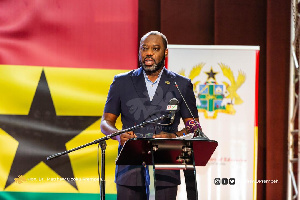 Energy Minister, Dr Matthew Opoku Prempeh
Energy Minister, Dr Matthew Opoku Prempeh
The International Monetary Fund (IMF) has said that the country’s energy sector debt will continue to remain above US$1 billion per year if the government does not step up its game in implementing the Energy Sector Recovery Plan.
According to the Article IV report (2021) of the IMF, as at the end of 2018 (the latest publicly available data), the sector’s losses had translated into cumulative arrears of US$2.75 billion – of which US$851 million is owed to the private sector.
Last year, the report adds, the country spent 2 percent of GDP to support the sector which is beset with challenges such as excess power generation capacity and gas supply, limited transmission capacity, large distribution losses, and low and subsidised electricity tariffs.
According to the Fund, the government has signed Power Purchase Agreements (PPAs) with 32 Independent Power Producers (IPPs) – resulting in excessive supply over demand and high fixed cost.
Even though the government is renegotiating some of these contracts, a move that can reduce cost by 30 percent (saving US$220 million in 2022), the IMF says it will involve refinancing IPP debt worth US$900 million.
Then, the challenge of power sector shortfalls keeps choking the energy sector; as electricity tariffs only cover 73 percent of cost. Thus, the IMF says adjusting electricity tariffs to inflation will be needed to bring the annual financial shortfall from electricity generation under US$500million by 2024.
Closely related to this is technical losses of the Electricity Company of Ghana (ECG), which had reached GH¢3 billion in 2018 – with no clear plan from the distribution company to address it.
However, the report acknowledged that the pandemic has contributed to the slow pace of implementing the Energy Sector Recovery Programme (ESRP) to address the challenges.
But it further advised that government become more current and transparent with data on the sector so that the real situation can be fairly assessed.
“Information on the performance of the sector remains patchy and outdated. The latest publicly available debt data is from 2018. The ESRP itself calls for transparency, yet there has been limited public reporting on progress. There appears to have been limited stakeholder consultation on the IPP renegotiation or procurement of new contracts in the sector,” the report stated.
The government, in the 2021 budget introduced an Energy Sector Recovery Levy of 20 pesewas per litre on petrol/diesel under the ESLA, as a means of finding additional resources to cover the excess capacity charges which have resulted from the Power Purchase Agreements (PPAs).
The ESRP
The ESRP is a roadmap of immediate, near-term and medium-term actions needed to achieve the government’s aim of bringing the sector into balance by the end of 2023, and a commitment by the government to fund the Annual Sector Shortfall (with Sector Stabilisation Payments) from 2020 onward until the sector is in balance to prevent further accumulation of arrears.
According to the programme, some identified actions in the ESRP will be taken immediately (Phase I). Key actions in Phase I include: making full and timely payment of MDA electricity bills; instituting a least-cost fuel procurement strategy; adopting a competitive procurement policy for Energy Supply and Service Contracts, including placing a moratorium on unsolicited proposals; and establishing` an Energy Sector Task Force (ESTF) to further develop, implement, and monitor impacts of the ESRP.
Phase II of the ESRP will continue the move toward full cost recovery for gas and electricity; address overcapacity in the power sector, oversupply in the gas sector; and the accumulated Sector Arrears.